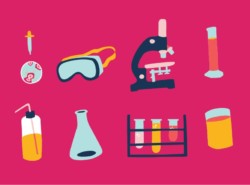
Circulating tumour DNA for monitoring treatment response to neoadjuvant therapy in women with HER2 overexpressing breast cancer
Published: 10/9/19 1:48 AM

Sarah-Jane Dawson
Around 15% of breast cancers overexpress the human epidermal growth factor 2 receptor (HER2), and several HER2 targeted therapies are now leading to an improved prognosis for women with HER2 positive disease. The NeoALTTO clinical trial has recently demonstrated the promising role of dual inhibition of HER2 with lapatinib and trastuzumab in the neoadjuvant (preoperative) treatment setting. Neoadjuvant therapy is now becoming standard practice in many patients with high risk early breast cancers, however, accurate monitoring of treatment response to neoadjuvant therapy is challenging. Novel biomarkers are needed to more precisely monitor the effectiveness of treatment in women receiving neoadjuvant therapy and guide treatment decisions. Many breast cancers shed small amounts of DNA (called circulating tumour DNA or ctDNA) into the bloodstream and the measurement of ctDNA has the potential to be used as a highly specific marker of response to therapy in women with breast cancer. Through recent advances in genomic technologies, it is now possible to characterise specific DNA mutations in a patient’s tumour, design tests to identify these mutations, and then apply these tests to accurately measure the amount of ctDNA in blood. This research proposal will investigate the role of ctDNA as a novel tool to measure responses to neoadjuvant therapy in women with HER2 positive breast cancer within the NeoALTTO clinical trial. This research will open up new opportunities for molecular disease monitoring during neoadjuvant therapy, in order to personalise treatment decisions, improve disease outcomes and guide the implementation of new therapeutics in this setting.